When properly installed, a fake grass lawn will require little to no maintenance in order to keep it looking great. You may have to hose it off every once in awhile and you may need to rake some of the blades back into place, but as far as maintenance goes, that is really it.
Deciding to install an artificial grass lawn yourself can be an intense process, especially if you have a large yard. Make sure that you have a few friends or family members that are willing to help out.
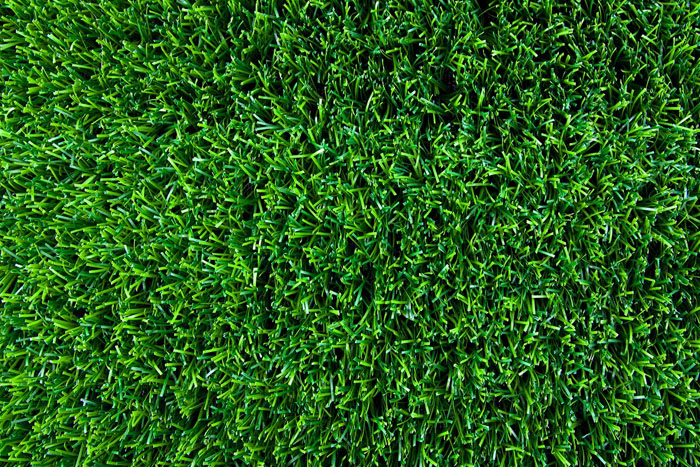
Here are the instructions for DIY Artificial grass installation.
Table of Contents
Preparing The Area
The first step that you will need to take before installing your artificial grass is to make sure that the area is prepared. You need to remove the top layer of soil in the area. Make sure all of the grass and plants are removed from the area.
Plan For Drainage
Artificial grass installations that are completed soil that drains well should not have any issues with drainage. However, if you are installing the fake lawn in an area that has a poor draining system, there are some steps to take. If there is not currently a drainage system in place, you need to install one.
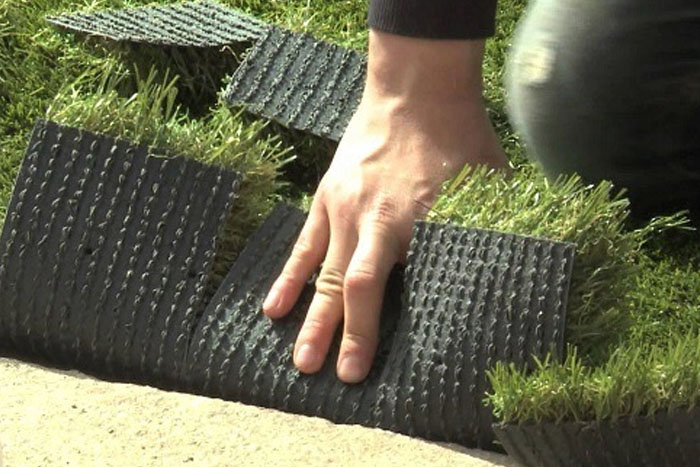
Install A Border
Once the soil is prepped and drainage has been taken care of, you will want to install a border around the edge of the yard if there is not one present. This will help keep the lawn from separating over time. Plastic borders are quite common and effective.
Add A Weed Barrier
Adding a weed barrier is an optional step, but it is recommended. An appropriate weed barrier will ensure that weeds do not grow up and through your fake grass lawn. You will lay this protective over the area that you have excavated. You may also choose to install the weed barrier over a base material.
Installing The Base Layer
After the ground is prepared it is time to add the base material. You will want to use gravel or fine crushed rock for this. Fill in the excavated area with 3 to 4 inches of the base layer material. About one cubic yard of material is needed for every one hundred square feet of yard.
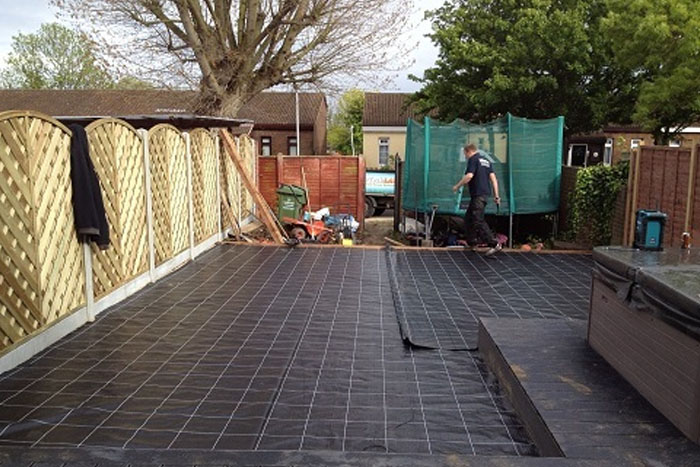
If you are installing the fake grass over a hard surface such as concrete you can add a rubber shock pad or a self-leveling compound instead.
Once you have placed the base layer you will want to use a landscaping rake in order to smooth it out. Use a level to make sure that the base level is flat.
Next, you will want to moisten the base. Sprinkle water over the base layer and then use a compactor to flatten the material into a sturdy base. A vibratory plate compactor will be the most effective option.
Installing The Lawn
While the base is drying you will want to roll out the fake grass over to the side. It may take it a bit to regain its shape after being rolled.

Once the base is dry and ready, measure the area where the turf will be placed and then measure the length and width of the turf strips. Stretch out the strips of turf and lay it over the prepared base. Make sure that when you are installing the strips that you lay them all in the same direction.
Once all of the strips have been put in place, cut off any excess areas. You can use a utility knife or carpet cutter for this step.
Once the strips are in place and cut it is time to seam them together. There are several ways to do this. One option is to fold the edges of the strips back and then applying an adhesive product. You can use tape or glue for this.
Once the strips are secure it is time to fasten the perimeter. You will want to use landscaping nails for this. Hammer the nails in around the edges at about one per every six inches.








Adding Infill
Once your fake grass lawn is installed it is time to add the infill. The majority of fake grass will require particles to be added in order to help the grass stand tall. When the lawn is completely dry, apply a layer of the infill product. You can either do this by hand or by using a drop spreader. A drop spreader will ensure an even coat.
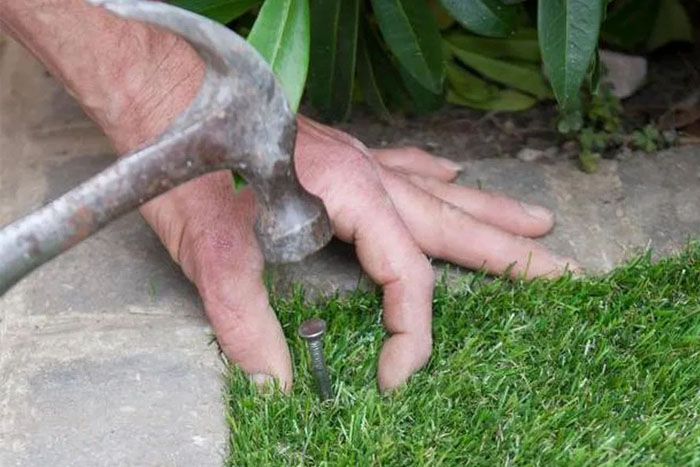
Once you have applied the material you will want to rake it in order to smooth it out.
You should use the infill product that is recommended by the manufacturer for the best results. Some of the common infill products include washed silica sand, black crumb rubber, or copper slag.
There are some artificial grass products that do not require infill.
After you have added a few layers of infill, you will then want to water the lawn. This will help the infill product settle. If the lawn is not bouncy enough or if there is too much of each blade of grass exposed, rake in some more infill.
Conclusion
DIY artificial grass can be a long process and you are going to want to have someone to help you with this project. However, choosing to install fake grass yourself is a great way to save money when installing fake grass at your home.
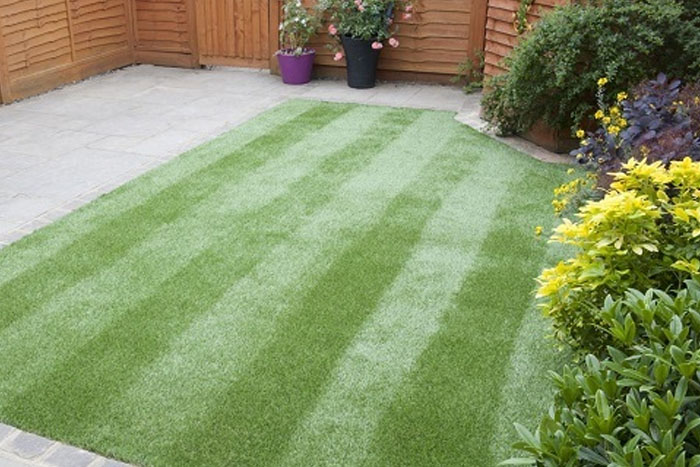
The installation process is not complicated, but you will want to make sure that you do it correctly. If you do not follow the right steps you can end up with a fake lawn that is uneven and not looking the best.

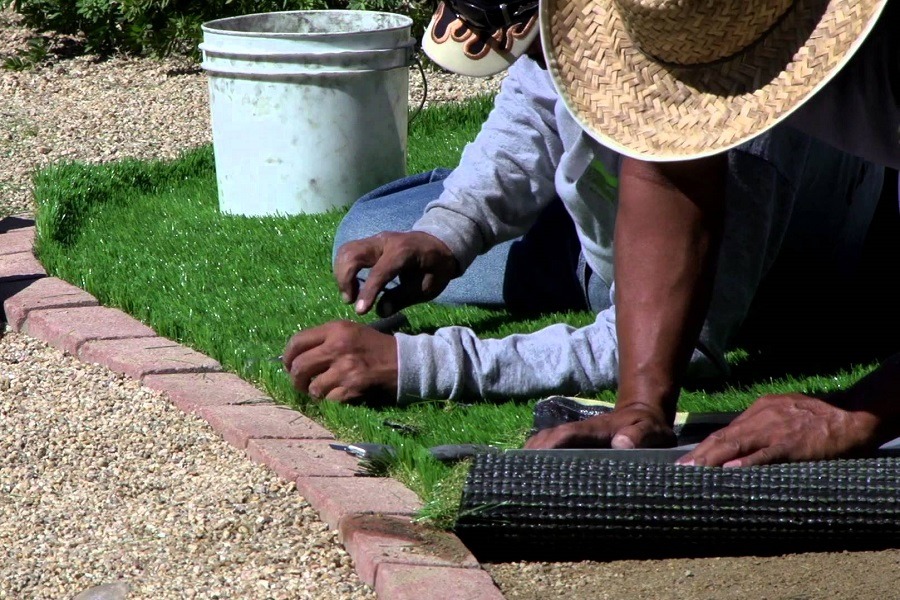



I have a question and hope you can help me, I am considering fake grass on the side of our house that nothing grows and the dog just tracks mud in. The base is clay-soil, a hill and approx 20′ long by 10″wide, will this work on hills? Thank You.
Hi Barb, yes this should work just fine. With hills though it is important to make sure you have an appropriate surface to pin the fake grass down on the corners and along the side. As long as you do this you should do well ?
Interested in the pricing and professional installation cost. Large backyard (new).